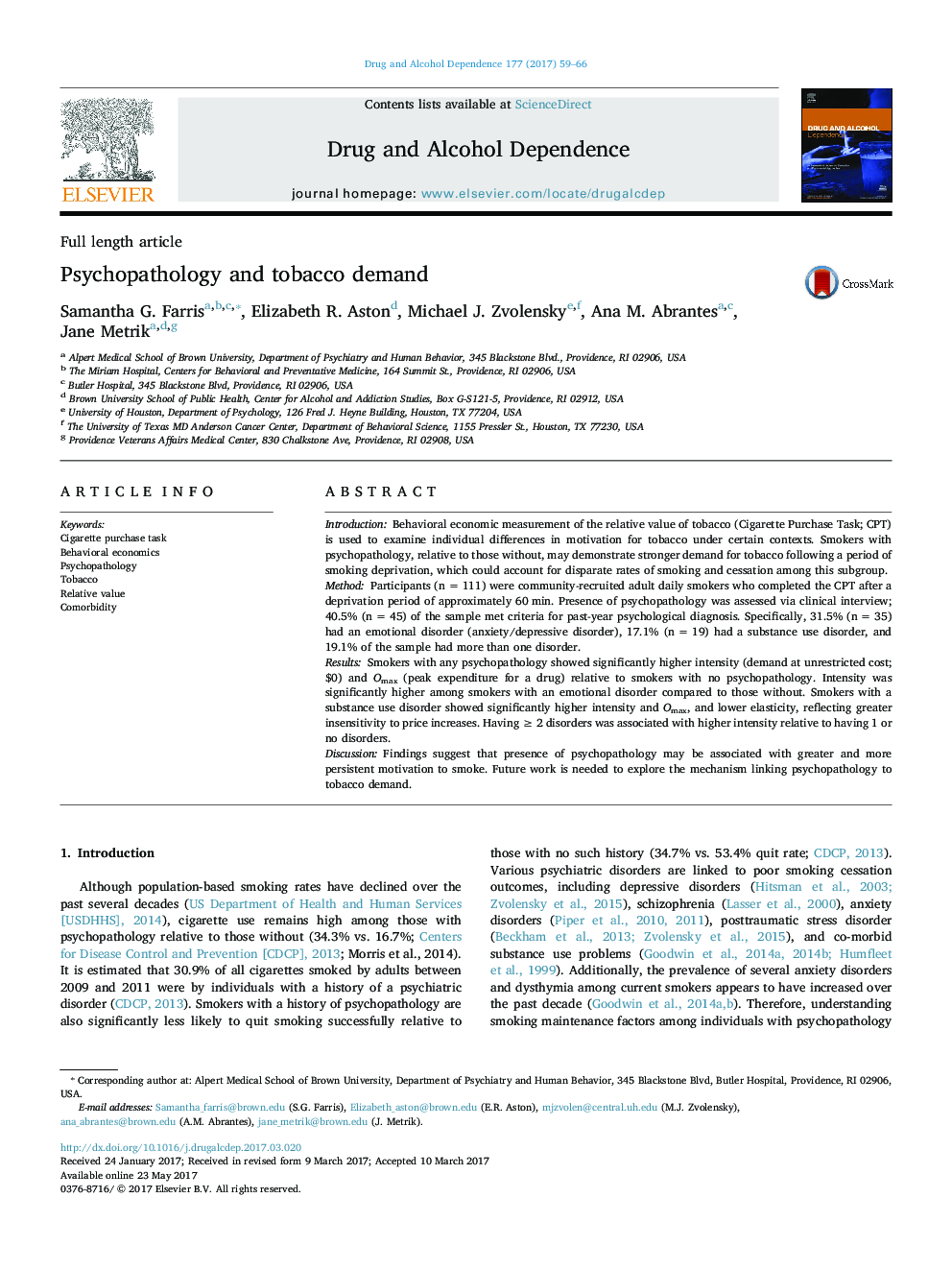| Article ID | Journal | Published Year | Pages | File Type |
|---|---|---|---|---|
| 5120025 | Drug and Alcohol Dependence | 2017 | 8 Pages |
â¢Smokers with psychopathology have higher tobacco demand intensity and Omax.â¢Smokers with an emotional disorder versus without have higher demand intensity.â¢Comorbid substance use disorder (SUD) was associated with higher intensity, Omax, and inelastic demand.â¢Two or more comorbid disorders are associated with higher demand intensity.
IntroductionBehavioral economic measurement of the relative value of tobacco (Cigarette Purchase Task; CPT) is used to examine individual differences in motivation for tobacco under certain contexts. Smokers with psychopathology, relative to those without, may demonstrate stronger demand for tobacco following a period of smoking deprivation, which could account for disparate rates of smoking and cessation among this subgroup.MethodParticipants (n = 111) were community-recruited adult daily smokers who completed the CPT after a deprivation period of approximately 60 min. Presence of psychopathology was assessed via clinical interview; 40.5% (n = 45) of the sample met criteria for past-year psychological diagnosis. Specifically, 31.5% (n = 35) had an emotional disorder (anxiety/depressive disorder), 17.1% (n = 19) had a substance use disorder, and 19.1% of the sample had more than one disorder.ResultsSmokers with any psychopathology showed significantly higher intensity (demand at unrestricted cost; $0) and Omax (peak expenditure for a drug) relative to smokers with no psychopathology. Intensity was significantly higher among smokers with an emotional disorder compared to those without. Smokers with a substance use disorder showed significantly higher intensity and Omax, and lower elasticity, reflecting greater insensitivity to price increases. Having â¥Â 2 disorders was associated with higher intensity relative to having 1 or no disorders.DiscussionFindings suggest that presence of psychopathology may be associated with greater and more persistent motivation to smoke. Future work is needed to explore the mechanism linking psychopathology to tobacco demand.
